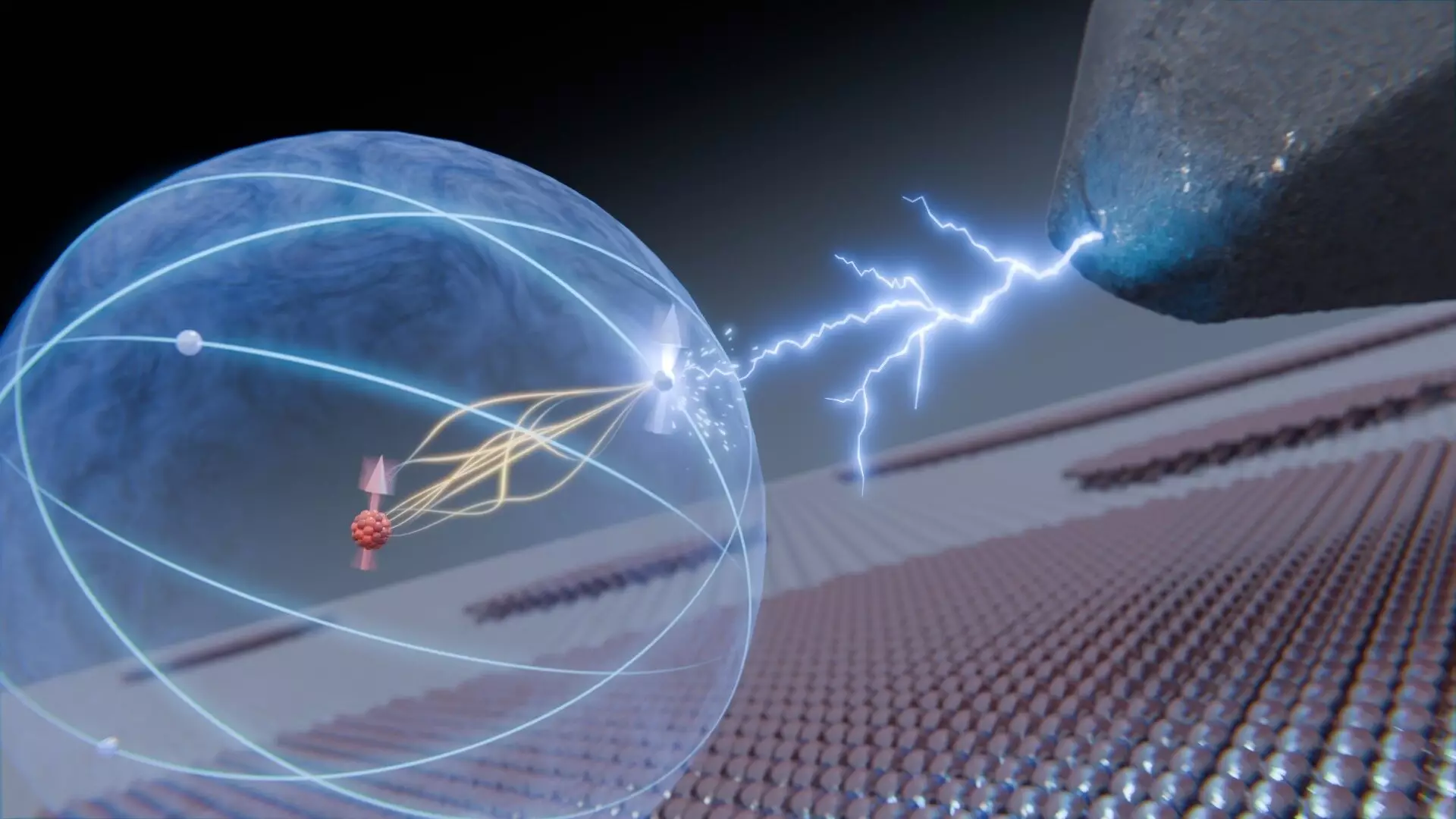In a remarkable breakthrough, researchers at Delft University of Technology in the Netherlands have succeeded in exerting controlled movement within the atomic nucleus, a feat that opens the door to revolutionary developments in quantum information technology. Their pioneering study, documented in the prestigious journal *Nature Communications*, showcases how they facilitated interactions between the nucleus of a titanium atom and one of its outer electrons. This interaction was made possible through the sophisticated use of a scanning tunneling microscope, a tool capable of manipulating and observing atomic-scale phenomena with unprecedented precision.
The implications of this research are vast; the ability to store quantum information within the nucleus is particularly enticing because the nucleus is largely insulated from external disturbances that typically arise in electronic environments. By focusing on a specific isotope, titanium-47, which possesses a unique magnetic property due to its reduced neutron count, the researchers took an innovative approach to explore the enigmatic realm of quantum states.
At the core of this phenomenon lies the concept of “spin,” often described as a quantum analogue to a compass needle. In their experiments, the researchers revealed that the spin states of the atomic nucleus could hold information akin to binary data in conventional computing. However, manipulating these spin states is no simple matter; the researchers had to navigate the intricate physics dictated by the weak hyperfine interactions present in such systems.
As Sander Otte, the research lead, mentioned, this interaction is exceptionally fragile and requires precise tuning of magnetic fields to become effective. This high level of specificity underscores the complexity of quantum interactions and the necessity for acute experimental conditions to produce stable results.
Through meticulously calibrated voltage pulses, the researchers managed to displace the electron spin from its equilibrium. This disruptive yet controlled maneuver led to a fascinating synchronization, where both the electron and nuclear spins began to resonate together—essentially wobbling in unison for a fleeting moment. What makes this observation critically important is the significant alignment with the theoretical predictions set forth by Schrödinger’s equations, affirming that the quantum information is preserved during these interactions.
Lukas Veldman, who recently completed his Ph.D. on this project with honors, contributed substantial computational analysis that mirrored the experimental data, showcasing the reliability of their methods. This reinforcement of the idea that no quantum information was lost through their interactions is a major step towards practical applications in quantum computing.
Envisioning the Future of Quantum Technology
While commercial applications remain speculative, the researchers emphasize the broader implications of their work. Otte notes that their experiment represents a profound human ability to influence matter on an atomic scale, suggesting a future where quantum mechanics could radically redefine information storage and processing. As research progresses, this study stands as a landmark achievement that bridges experimental physics with the quest for scalable quantum technologies, potentially leading to breakthroughs that were previously thought to be unattainable.

